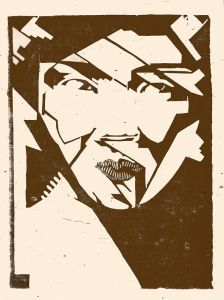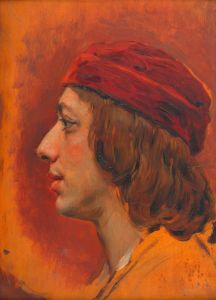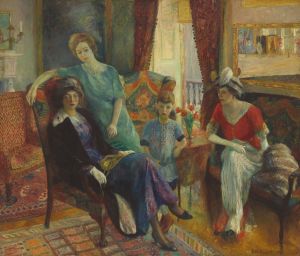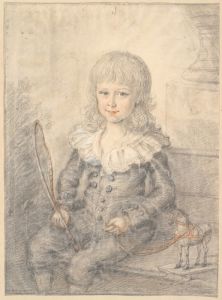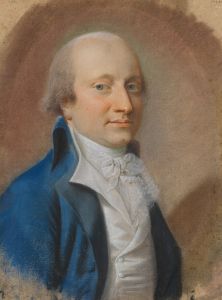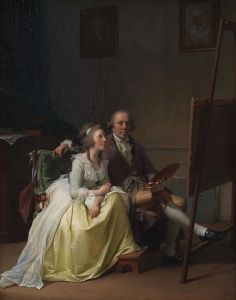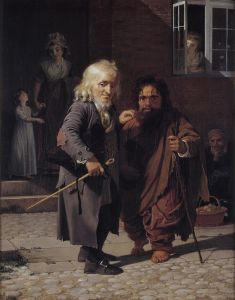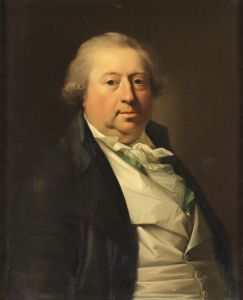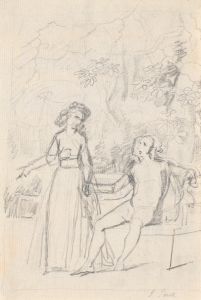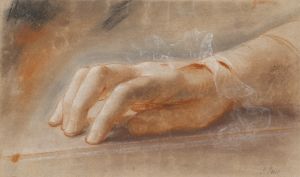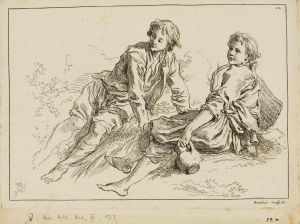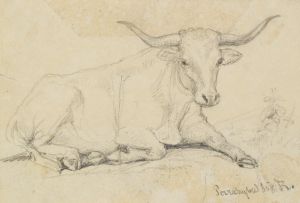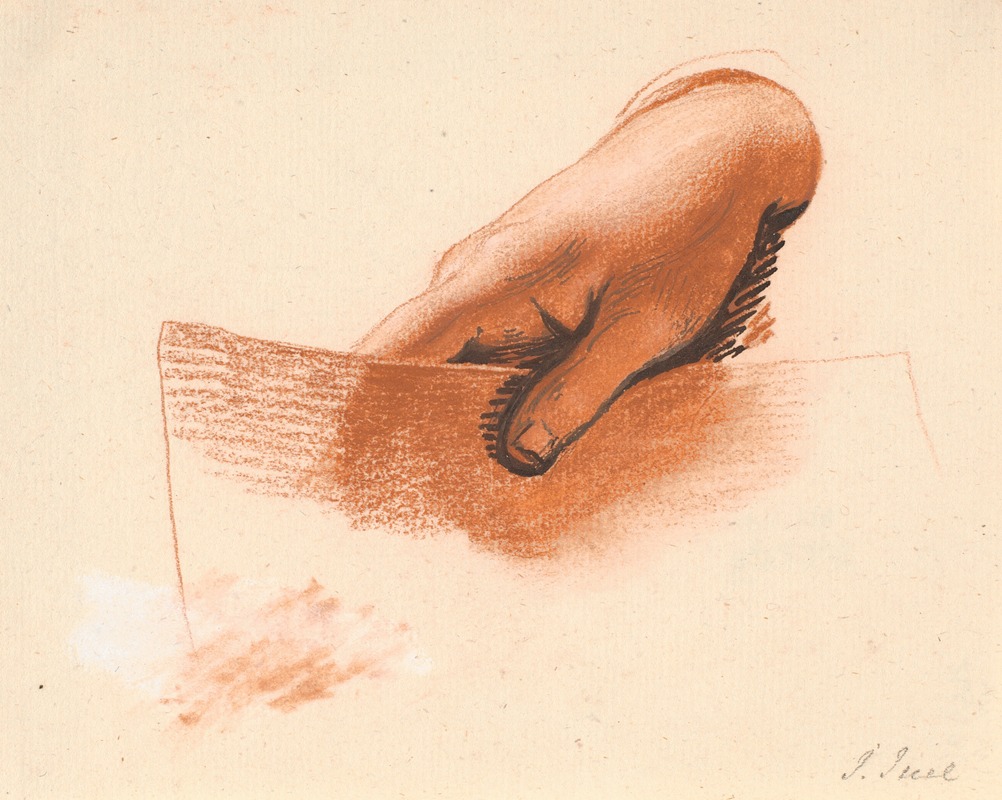
Studie af en mands højre hånd, holdende et stykke papir; studie til det Ankerske familiebillede
A hand-painted replica of Jens Juel’s masterpiece Studie af en mands højre hånd, holdende et stykke papir; studie til det Ankerske familiebillede, meticulously crafted by professional artists to capture the true essence of the original. Each piece is created with museum-quality canvas and rare mineral pigments, carefully painted by experienced artists with delicate brushstrokes and rich, layered colors to perfectly recreate the texture of the original artwork. Unlike machine-printed reproductions, this hand-painted version brings the painting to life, infused with the artist’s emotions and skill in every stroke. Whether for personal collection or home decoration, it instantly elevates the artistic atmosphere of any space.
Jens Juel, a prominent Danish painter of the 18th century, is renowned for his portraits and landscapes that capture the essence of the Danish Golden Age. One of his notable works is "Studie af en mands højre hånd, holdende et stykke papir; studie til det Ankerske familiebillede," which translates to "Study of a Man's Right Hand, Holding a Piece of Paper; Study for the Anker Family Portrait." This artwork is a preparatory study for a larger family portrait commissioned by the Anker family, a prominent family in Denmark during Juel's time.
Jens Juel was born on May 12, 1745, in Balslev, Denmark, and he became one of the leading figures in Danish art. He studied at the Royal Danish Academy of Fine Arts in Copenhagen and later traveled extensively throughout Europe, which greatly influenced his artistic style. Juel's work is characterized by its attention to detail, realistic representation, and the ability to capture the personality and status of his subjects.
The study of the man's right hand is a testament to Juel's meticulous approach to portraiture. In this particular study, Juel focuses on the hand's anatomy and the way it interacts with the piece of paper it holds. This level of detail is crucial for the larger composition of the family portrait, where each element contributes to the overall narrative and aesthetic balance. The study likely served as a reference for Juel when he was painting the final portrait, ensuring that the hand's position and gesture were accurately depicted.
Juel's ability to render hands with such precision and expressiveness is one of the reasons he was highly sought after as a portrait artist. Hands in portraiture can convey a great deal about the subject, including their social status, occupation, and even their personality. By focusing on the hand holding a piece of paper, Juel may have been emphasizing the importance of literacy, communication, or the specific role of the individual within the Anker family.
The Anker family portrait, for which this study was created, would have been a significant commission for Juel, reflecting both his skill and reputation. Family portraits during this period were important symbols of status and legacy, often displayed prominently in the homes of the wealthy and influential. Through his work, Juel contributed to the visual documentation of Danish society and culture in the late 18th century.
Jens Juel's legacy as an artist is preserved through his numerous portraits and studies, which continue to be appreciated for their technical skill and historical significance. His works are held in high regard and can be found in various museums and collections, including the National Gallery of Denmark. The study of the man's right hand is a small yet integral part of Juel's oeuvre, showcasing his dedication to capturing the human form with accuracy and elegance.





